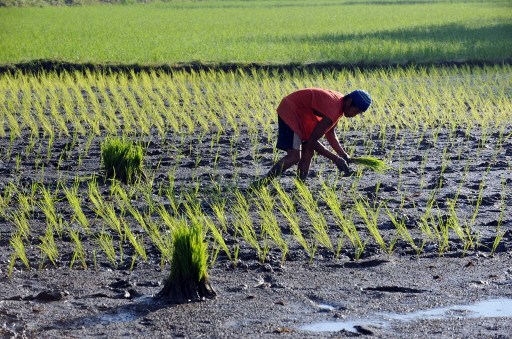SUMMARY
This is AI generated summarization, which may have errors. For context, always refer to the full article.

MANILA, Philippines – Despite rising per capita income, the Philippines is still consuming more rice, which remains the staple food among low-income Filipinos.
This was the main finding of a study conducted by the Southeast Asian Regional Center (SEARCA) for Graduate Study and Research, commissioned by the Philippine Rice Research Institute (PRRI).
In 2009-2010, Filipinos eat an average of 119 kg of rice annually; however, in 2008 the average consumption was 128 kg per person, the highest since the 1980s, according to the study.
In the past two decades — except in 2008-2009, due to the global rice crisis in the first part of ’08 — demand for rice in the country has been steadily going up.
Better economy, lesser rice demand
The SEARCA study said this was in contrast with our Asian neighbors such as China, India, Indonesia, Bangladesh, Vietnam, and South Korea, which all showed declines in rice demand since the 1970s.
Factors in the decline, the PRRI-commissioned study noted, include rising economies and incomes, which lead to a diversified diet.
They exhibit the trend that as incomes rise, people would consume less rice & corn in favor of other foods, such as produce, meat, fish, and baked goods.
In the case of the Philippines, despite rising per capita income, rice consumption still rose in the past few years.
Rice consumption by higher income groups actually declined, following the trend in middle- to higher-income countries.
The rich have a more diverse food basket, and also eat more fish, meat, and produce, the study noted, so they depend less on rice.
Lower-income Filipinos, particularly those in rural areas, still depended on the staple.
Purchasing power of poor
Rice remains the main food for poor people, and price fluctuations affect them more.
“The findings have deep policy implications for the country’s rice self-sufficiency goal by 2013, one of the key strategies of which is to reduce rice demand,” Dr Gil Saguiguit Jr., SEARCA director, said in a press release on Sunday, September 30.
If the government wants to lessen rice consumption, the best way is not through price manipulation, which involves increasing prices to deter consumption, or subsidies that could instead increase consumption.
It is best to improve purchasing power so poorer families can diversify their food baskets, the officials said.
“It will lead to a decline in their rice consumption and the diversification of their diet in favor of other foods,” Dr Flordeliza Lantican, dean of the College of Economics and Management at the University of the Philippines Los Baños, said.
Spurring development in the provinces is the best way to improve incomes. This, they argue, would then lead to more Filipinos lessening their dependence on rice, as they will be able to afford other types of food. – Rappler.com
For related stories, read:
- INFOGRAPHIC: How much rice do Filipinos consume?
- PH vs ADB on rice sufficiency: Gov’t confident of 2013 goal
- Researchers find gene that can raise rice harvest
- Philippines’ goal not to import rice may harm world market: ADB
Add a comment
How does this make you feel?
There are no comments yet. Add your comment to start the conversation.